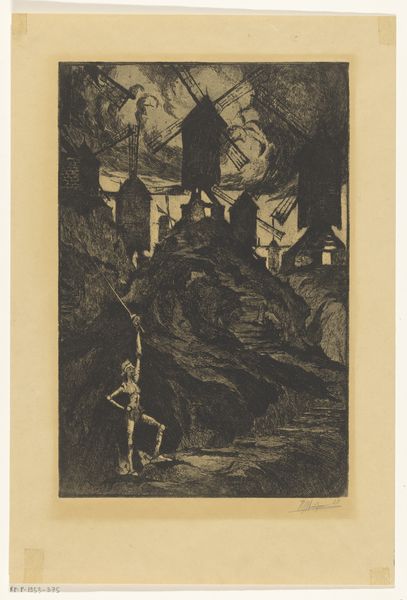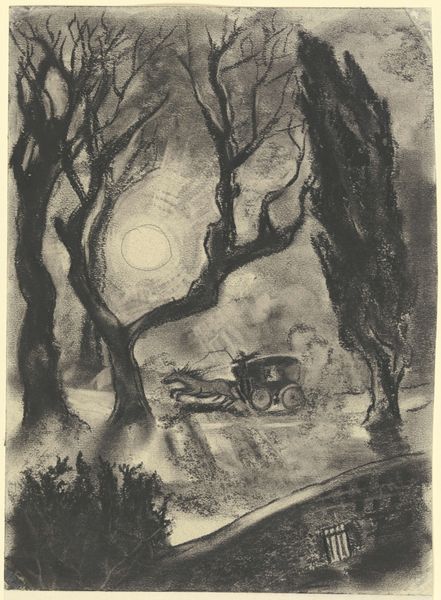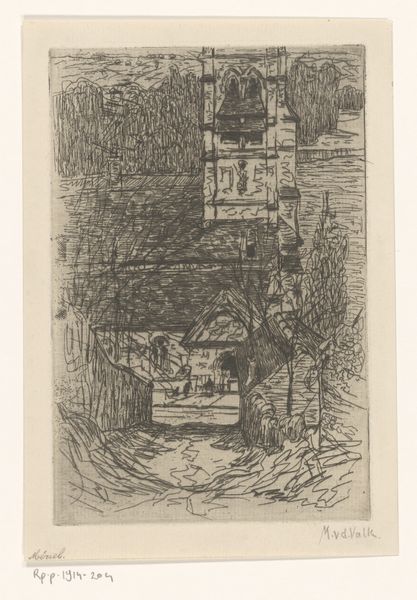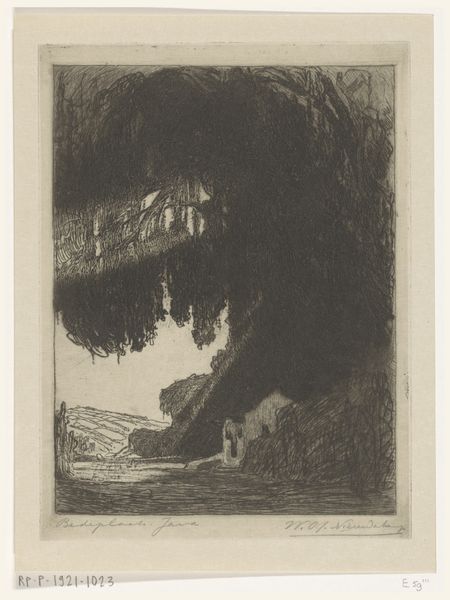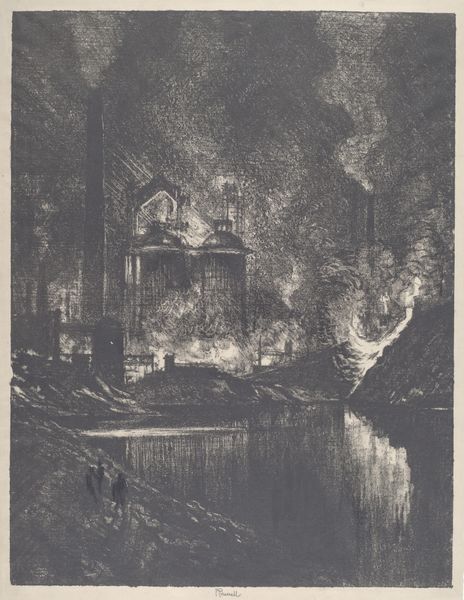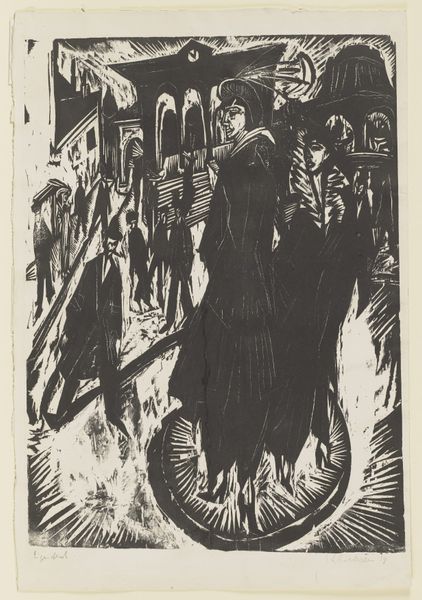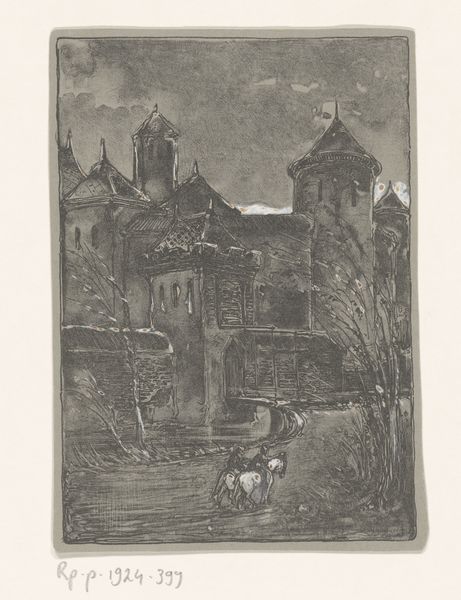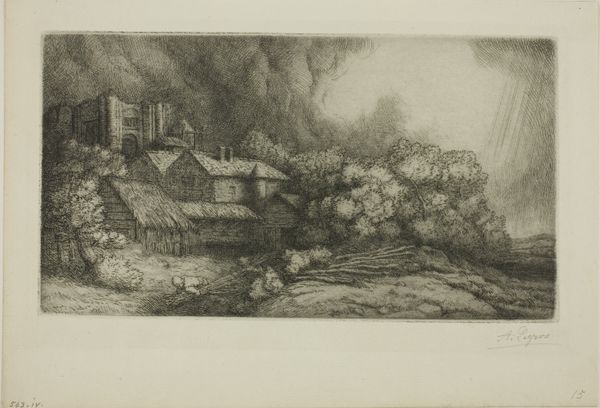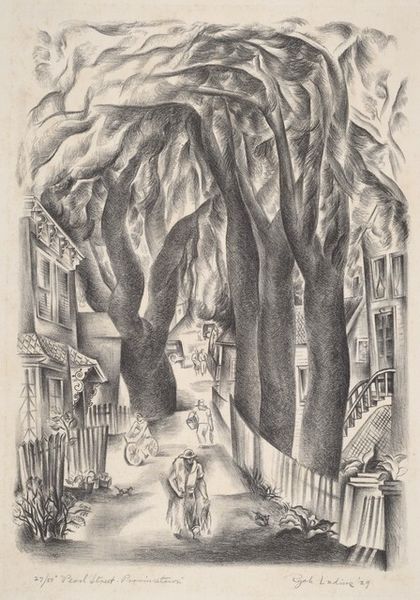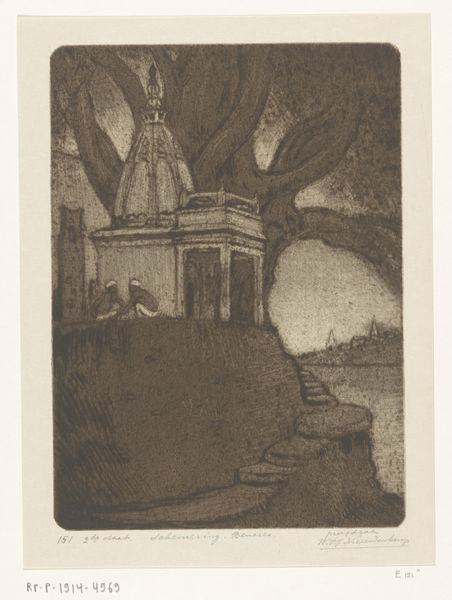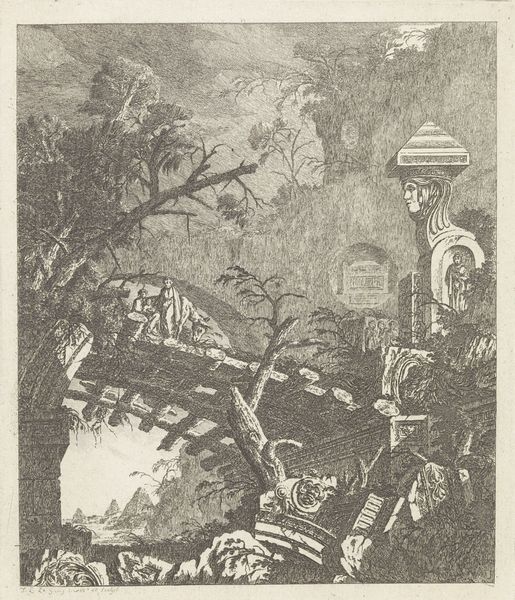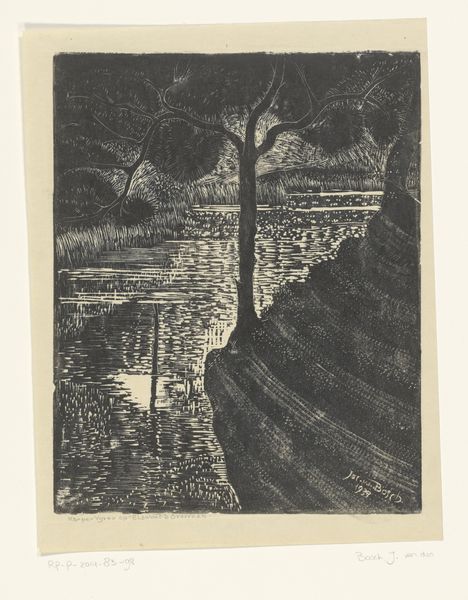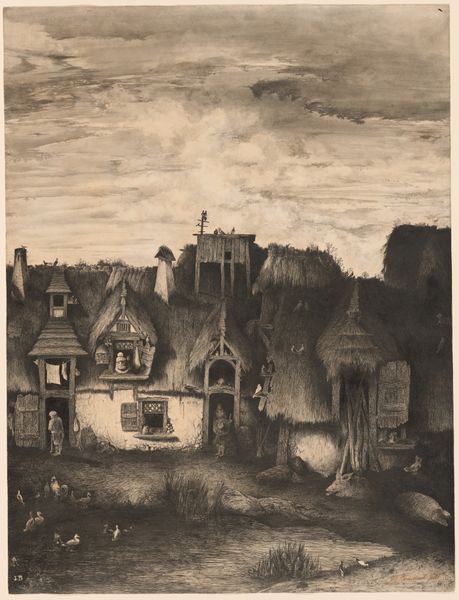
Copyright: Public Domain
Curator: Ernst Lincker rendered this vista "Near Clarens on Lake Geneva" in charcoal on paper around 1924. It resides here at the Städel Museum. Editor: There's something undeniably eerie about this landscape, isn't there? The darkness is punctuated by that intensely bright water, creating this high contrast that pulls you in but also makes you a bit uneasy. Curator: That tension seems appropriate for Lincker's work. As a proponent of Neo-Romanticism, he rejected the industrial and embraced depictions filled with subjective emotional experience, often tinged with anxiety, harkening back to the Romantics after the devastation of World War I. Editor: Yes, there is a sense of returning to the past. It seems very elemental with that powerful natural force of the water contrasting the solid construction of the building. You also get a sense of human versus nature. In terms of symbolic weight, flowing water often signifies time and change. Does the architectural permanence here represent a resistance to change, a futile attempt to hold on? Curator: Perhaps. Post-war, many artists, especially in Germany, wrestled with that desire to return to a more stable past while simultaneously acknowledging the irrevocability of their changed present. This piece, although seemingly simple, speaks to the complex psychological landscape of that era. Lincker later ended up a professor and, sadly, had his work condemned by the Nazi regime, another marker of that tumultuous epoch. Editor: Knowing that just makes the image all the more potent. The isolated structure almost seems like a fortress under siege by both natural forces and historical pressures. The tree trunk on the side acts as a frame, giving it an almost theatrical aspect like we're peeking in on a staged drama, doesn't it? Curator: Precisely! It's as if Lincker is presenting us with a stage upon which the drama of memory, loss, and resilience unfolds. The selective brightness illuminating that building seems like he's highlighting that human struggle against the tide of larger societal upheaval. Editor: It definitely stays with you, and brings out many emotions and associations as you look more and more carefully. I now know the name of Neo-romanticism rings true, with that almost gothic mood. Curator: Absolutely. It offers a powerful insight into that very specific moment in the 20th century.
Comments
No comments
Be the first to comment and join the conversation on the ultimate creative platform.
